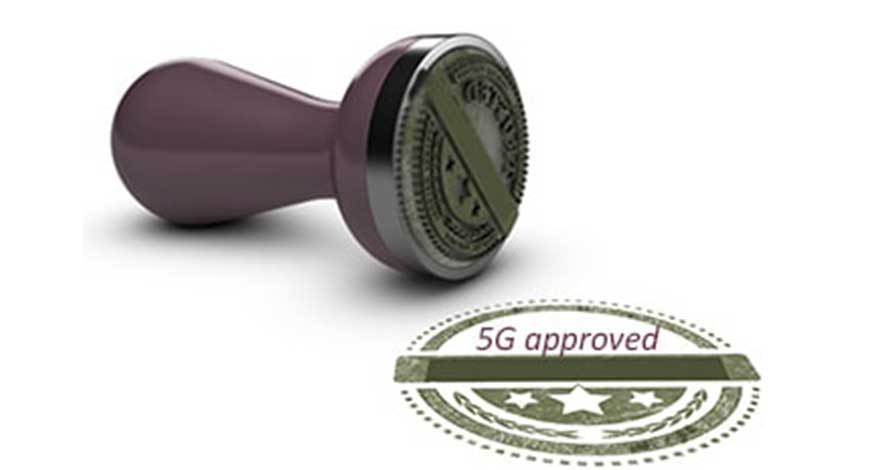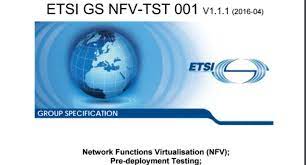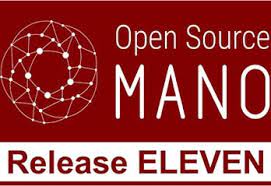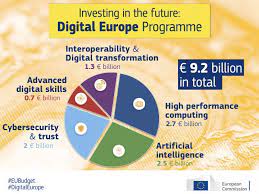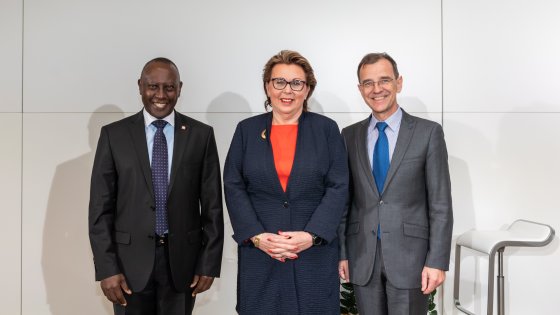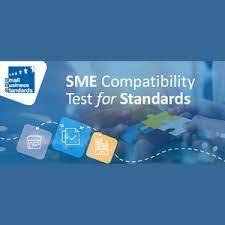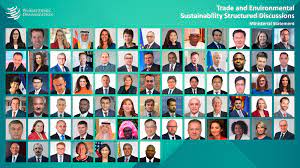Today our smartphones and tablets are fundamental for citizens and hold a wide range of user data and apps. At the same time, security attacks have increased with malicious applications and network eavesdropping. To define security and assurance requirements for smart phones and tablets, mitigate potential risks and protect users, ETSI has released a world class standard called Consumer Mobile Device Protection Profile, ETSI TS 103 732. The specification identifies key security and privacy risks for user data and provides appropriate protection. The new ETSI standard specifies security requirements for consumer mobile devices. It ensures the protection of key user data such as photos, videos, user location, emails, SMS, calls, passwords for web services, and fitness related data.
The ETSI specification has a broad coverage of security features including cryptographic support, user data protection, identification and authentication, security management, privacy protection, resistance to physical attack, secure boot, and trusted communication channels.
ETSI DECT-2020 NR, the world’s first non-cellular 5G technology standard, has been recognized by the WP5D of the International Telecommunication Union’s Radiocommunication Sector (ITU-R) and included as part of the 5G standards in IMT-2020 technology recommendation. Dr. Günter Kleindl, Chair of the ETSI Technical Committee DECT, says: “With our traditional DECT standard we already received IMT-2000 approval by ITU-R twenty-one years ago, but the requirements for 5G were so much higher, that we had to develop a completely new, but compatible, radio standard.” Released last year, the standard sets an example of future connectivity: the infrastructure-less and autonomous, decentralized technology is designed for massive IoT networks for enterprises. It has no single points of failure and is accessible to anyone, costing only a fraction of the cellular networks both in dollars and in carbon footprint.
The IoT standard, defined in ETSI TS 103 636 series, brings 5G to the reach of everyone as it lets any enterprise set up and manage its own network autonomously with no operators anywhere in the world. It eliminates network infrastructure, and single point of failure - at a tenth of the cost in comparison to cellular solutions.
The ETSI Industry Specification Group (ISG) for Network Functions Virtualization (NFV) has started working on its next specification release, known as "Release 5”, officially kicking off the new Release technical work after their September meeting.
The Release 5 work program is expected to drive ETSI NFV’s work into two main directions: consolidating the NFV framework and expanding its applicability and functionality set. On the one hand, some aspects of the NFV concepts and functionalities that have been addressed in previous Releases, but need additional work, will be further developed in Release 5. For instance, based on development, deployment experience and feedback collected during testing events such as the “NFV/MEC Plugtests” additional work on VNF configuration was deemed necessary. Another example is the more detailed specification work related to fault management modelling which aims at further defining faults and alarms information to improve interoperability during network operations, for root cause analysis and fault resolution in multi-vendor environments.
ETSI is pleased to announce OSM Release ELEVEN. Committed since its foundation to the alignment with ETSI standardization work, this release completes the adoption of two new ETSI NFV specifications, ETSI GS NFV-SOL004 and ETSI GS NFV-SOL007 for package formats. Standards adoption is part of the OSM vision to enable interoperability and a large and healthy NFV ecosystem. In addition, Release ELEVEN includes significant functional extensions in areas such as interoperability with public clouds, interaction with cloud-native environments and integration of network functions of different natures.
OSM is also aligning with the most recent market needs, by implementing the latest technologies for managing Containerized Network Functions (CNFs). This is a major differentiator in the orchestration space, and an important requirement for deploying 5G network functions and higher.
The Commission has adopted three work programs for the Digital Europe Programme, outlining the objectives and specific topic areas that will receive a total of €1.98 billion in funding. This first set of work programs includes strategic investments that will be instrumental in realizing the Commission's goals in making this Europe's Digital Decade. The Digital Europe Program aims to bolster Europe's technological sovereignty and bring digital solutions to market for the benefit of citizens, public administrations, and businesses.
The main work program, worth €1.38 billion, will focus on investment in the areas of artificial intelligence (AI), cloud and data spaces, quantum communication infrastructure, advanced digital skills, and the wide use of digital technologies across the economy and society, until the end of 2022. Alongside this main work program, the Commission published two specific work programs: the first one focuses on funding around cybersecurity, with a budget of €269 million until the end of 2022; and the second one focuses on the set-up and operation of the network of European Digital Innovation Hubs, with a budget of €329 million, until the end of 2023.
CEN Workshop Agreement "Sustainable Nanomanufacturing Framework"
The scope of the Workshop is the definition of a Sustainable Nanomanufacturing Framework (SNF) for sustainability management in nanomanufacturing processes. It sets up the basic requirements to assess the sustainability of a nanomanufacturing plant, allowing drafting improvement plans and monitoring the degree of progress of the nanomanufacturing plant.
The SNF model deploys the three traditional Sustainability Dimensions (SDs): social, environment and economy. Each SD is divided into several sustainability items (SIs). The SNF allows to diagnose the starting position of a nanomanufacturing plant with respect to the SNF model, at two levels: 1) Sustainability management practices and 2) associate KPIs to measure results. The result of the diagnose is used to elaborate the corresponding sustainability Improvement Plan for the nanomanufacturing plant. The SNF is used to monitor the progress of sustainability in the PL through a customizable dashboard (two radar diagrams, Management and KPIs), which allows intuitive visualization of the starting values and the proposed improvement values improvement baseline) for the period considered, as well as their evolution over time.
The European Committee of Standardization (CEN), the European Committee for Electrotechnical Standardization (CENELEC) and the Joint Research Centre of the European Commission (JRC) renewed their cooperation agreement for further five years. Through the agreement, the three organizations aim to enhance the exchange of knowledge and expertise between scientific research and European standardization. The JRC and the European Committee of Standardization look back on a fruitful collaboration of more than 30 years, with its first agreement signed in 1994. The renewal of the collaboration with JRC, initiated in 2016, will continue to provide European and international standardization with scientific input and it will build on lessons learnt and successes achieved.
One of the main initiatives developed jointly by CEN, CENELEC and JRC is Putting-Science-Into-Standards (PSIS), which aims to facilitate the identification of emerging science and technology areas that could benefit from standardization activities. The PSIS initiative has proven to be a successful example of foresight aimed at the timely identification of new sectors where standardization can enable innovation and promote industrial competitiveness.
Thirty years ago, the global economy was placed on a new footing in Vienna: the Vienna Agreement set the course for even closer co-operation and collaboration. What has changed since then? Fewer barriers to trade, more harmonized rules, and more room for innovation. Under the heading "From global to local: Joining forces to help global standards create local impact", the leaders of international standardization organizations such as CEN and ISO met again in Vienna on 11 October to further advance international co-operation. The Vienna Agreement was signed in Vienna 30 years ago. Its objective: ensure that European and international standards are not in conflict with each other, but that rather they are as consistent with each other as possible. The motto: "One standard, one test – accepted everywhere". Much has happened since then. Thanks to the Agreement, enterprises can rely on globally harmonized approaches to improving the quality of products and processes – there are uniform rules for measuring, testing and quantification of greenhouse gas emissions – parents can be confident that the packaging of drugs is child-resistant – the users of health apps can be sure of clear security levels for data protection and machinery manufacturers can use the same standards for exporting tractors to countries all over the world.
SMEs are the businesses that could potentially benefit the most from standards, but they face fundamental challenges when it comes to taking up standards and use them to reach their full potential. To help address this issue, SBS has developed the SME Compatibility Test for Standards. The SME Compatibility Test, an absolute first in the field of standardization, can measure and quantify the impact of a standard on SMEs activities and rate it in terms of SME-readiness. The test allows standard-makers and SMEs to evaluate both existing standards and new standards under development. The test has been developed thanks to the work and support of SBS experts and builds on the CEN-CENELEC Guide 17 - “Guidance for writing standards taking into account micro, small and medium-sized enterprises’ needs”.
EU Promotes World Trade Organization initiatives on Trade and Environment
The European Union has today committed to increase the role of trade in the fight against climate change and protecting the environment. It has signed up to three new initiatives to step up joint action in the World Trade Organization, sending a strong political signal on pursuing a strong environmental agenda for trade. The EU and a significant number of WTO countries will now work jointly on facilitating trade in green goods and services, promoting sustainable supply chains and the circular economy. They will also cooperate on battling plastic pollution and to enhance transparency of fossil fuel subsidies.







